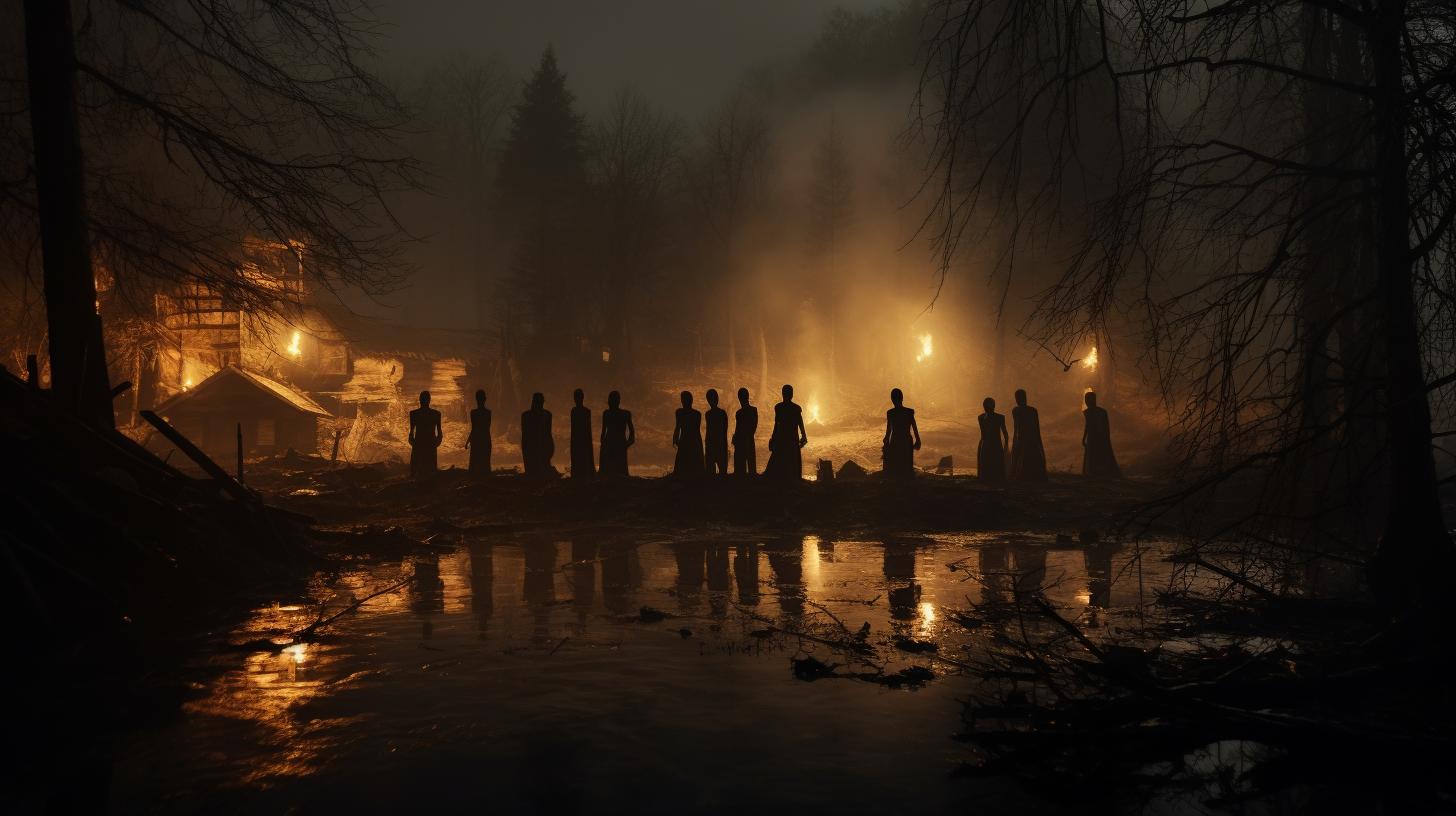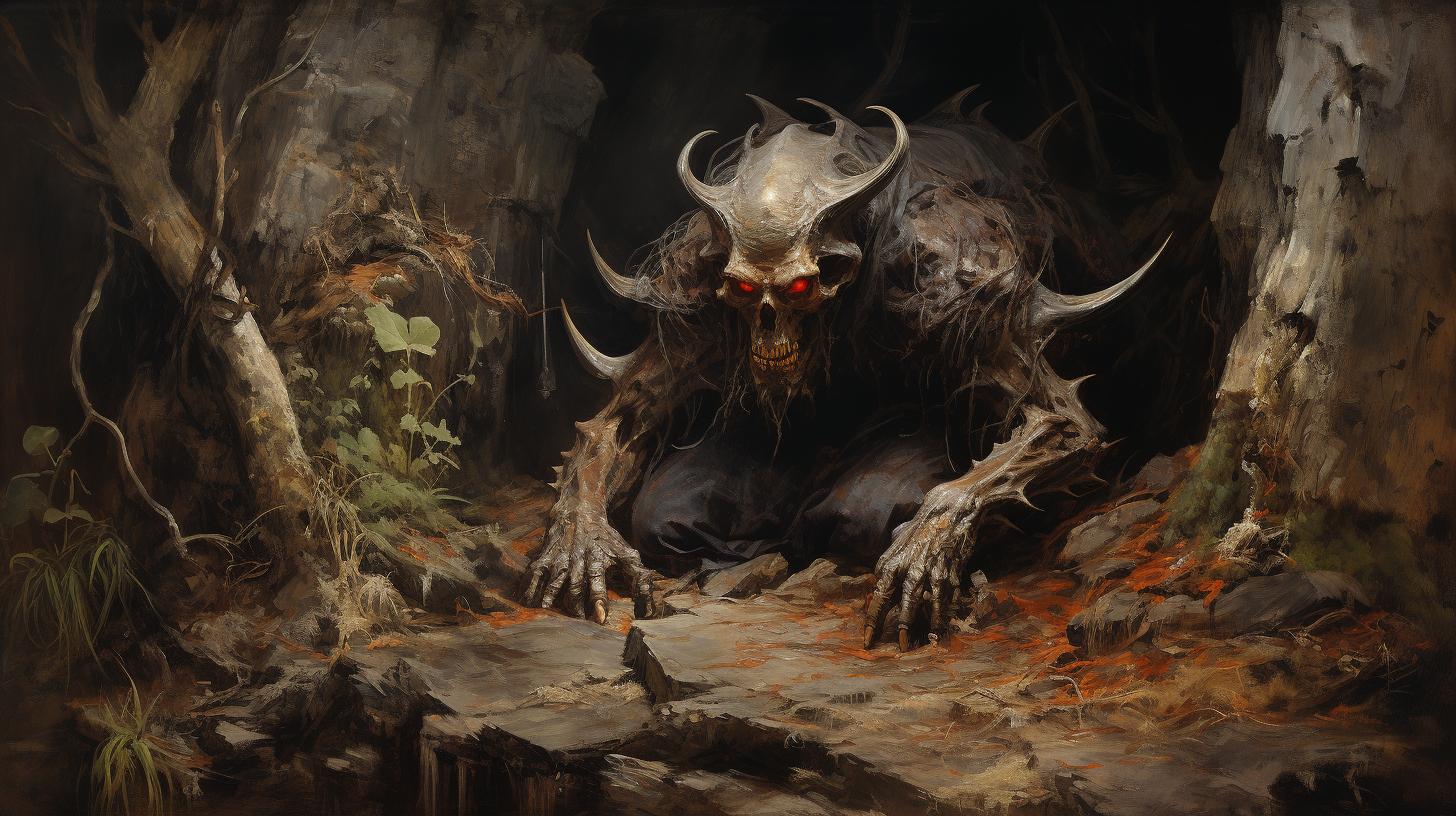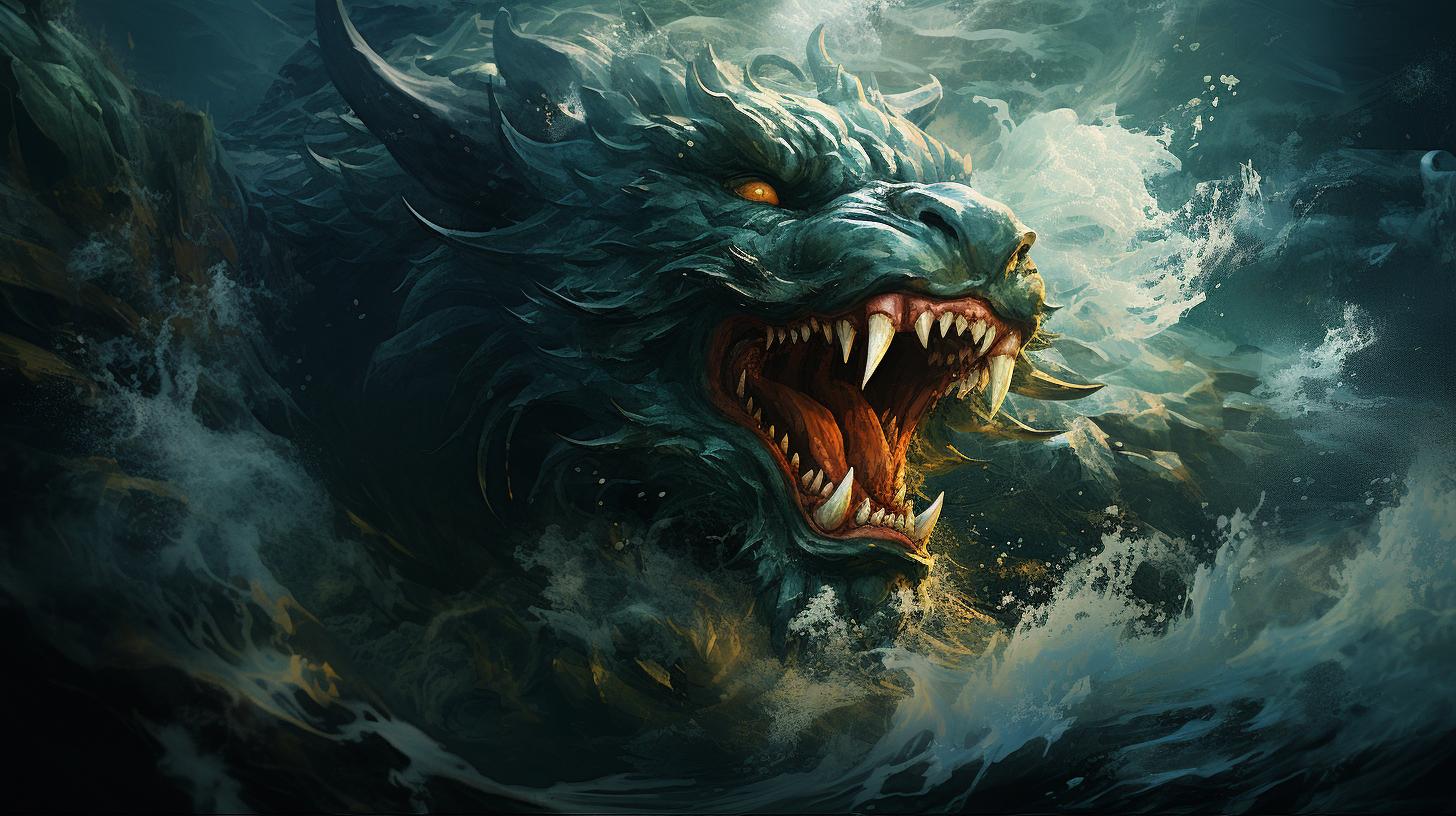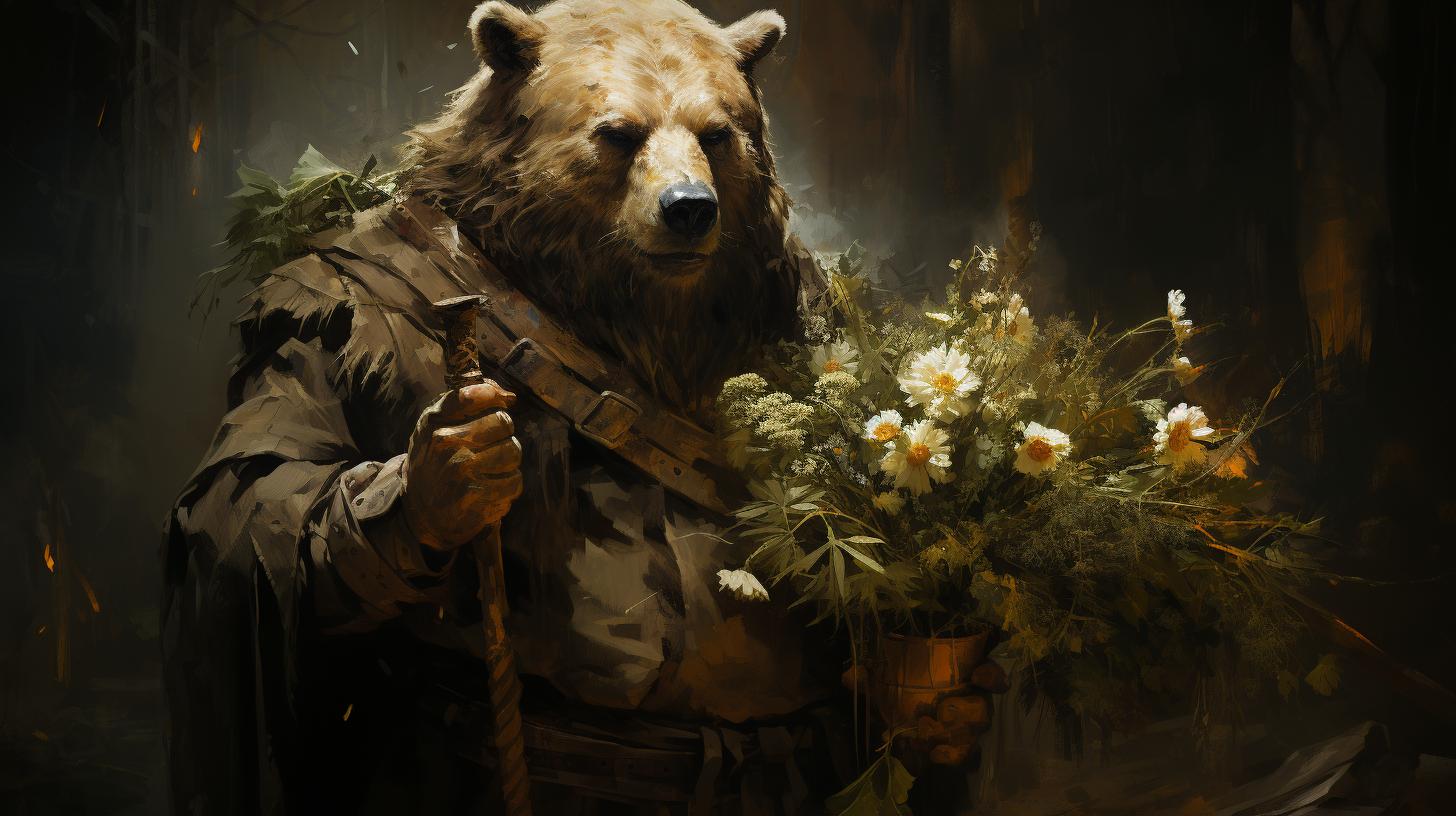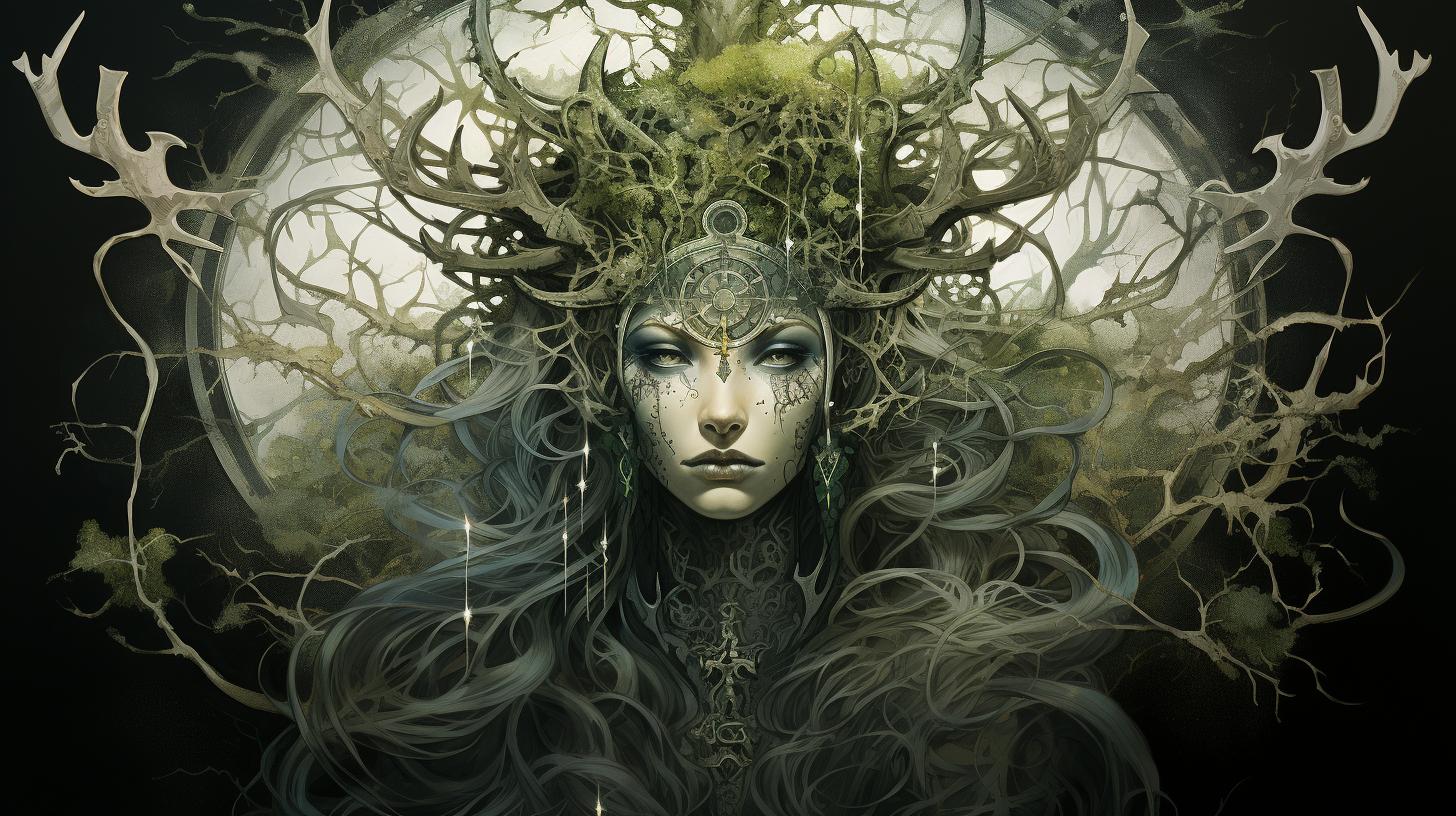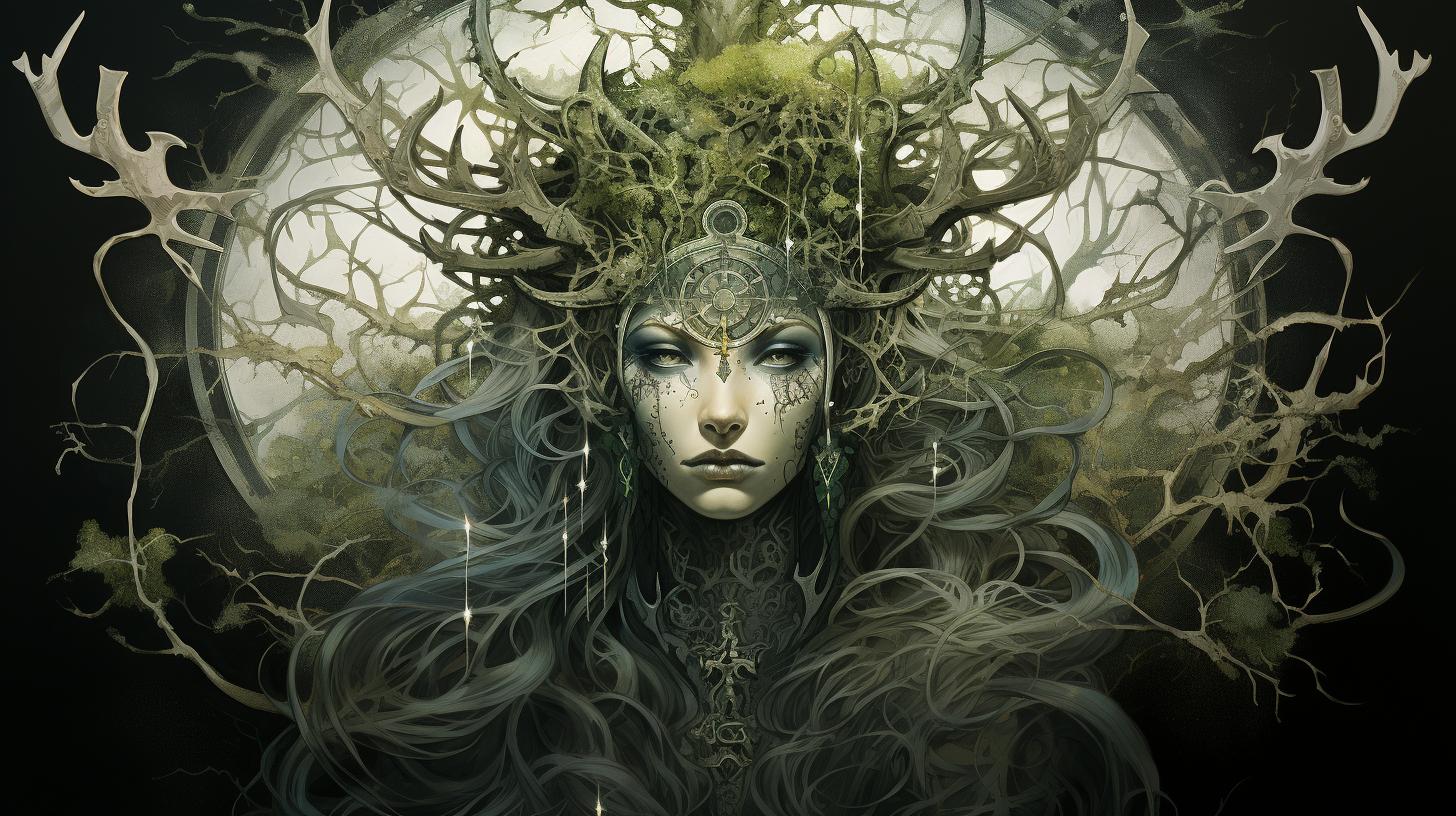‘Hiisi Finnish Mythology: The Enigmatic Tales of Native Spirits and Mischievous Beings in Finnish Folklore’
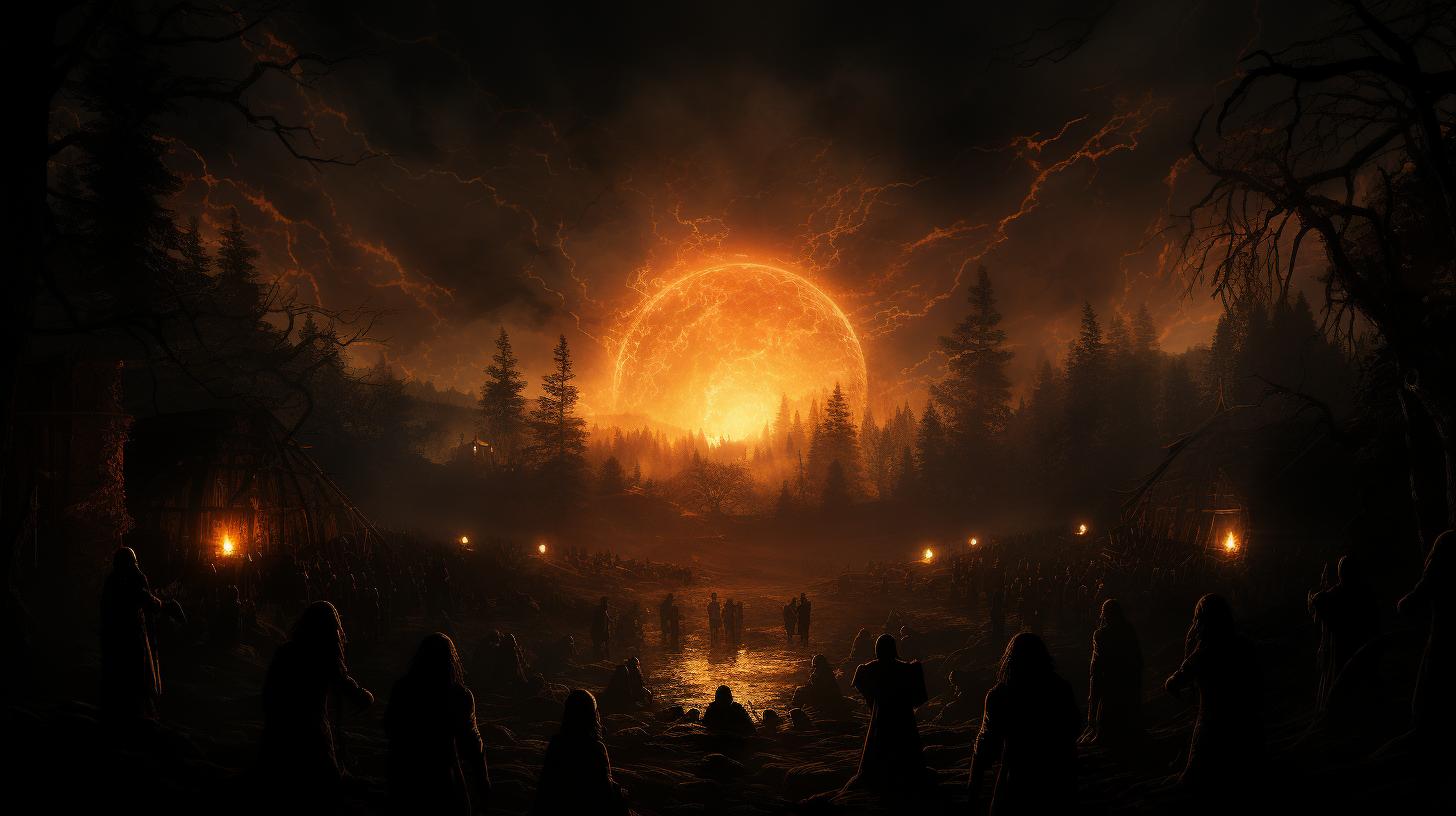
Hiisi Finnish mythology is an intriguing and rich topic in Finnish folklore. Hiisi refers to sacred places and mythological entities in Finnish mythology. These beings are often depicted as demons or mischievous creatures, considered native pagan inhabitants of the land.
Hiisi sites are found near prominent geographical features such as hills, forests, and rocky terrains. This article explores the origins and significance of Hiisi, the creatures associated with it, sacred landscapes, and the influence of Christianity on Finnish mythology.
The Origins and Meaning of “Hiisi” in Finnish Mythology
In Finnish mythology, the term ‘Hiisi’ holds great significance as it represents sacred locations and mythical entities. These entities are commonly portrayed as demons or mischievous beings, perceived as indigenous and pagan inhabitants of the land.
Hiisi sites are often found near prominent geographical features such as hills, forests, rocks, wells, and rugged terrains.
The origin and etymology of Hiisi are believed to be rooted in the spirit of mountainous forests.
In Estonian, ‘hiis’ refers to a sacred forest on elevated terrains. Finnish magical chants frequently associate Hiisi with hills or mountains, considering it as the owner or ruler of these landscapes.
Hiisi is also connected with forests and several woodland creatures.
In oral folklore, Hiisi is often described as creatures inhabiting Hiisi sites in the form of trolls or giants. Legends mention that these creatures have shaped peculiar rock formations and other distinctive landscape features.
Many recorded folklore tales about Hiisi come from the village of Narva in Vesilahti, Finland. These include accounts of cauldrons filled with coins caught by fishermen after rolling down the cliff at Hiidennokka and tales of how the Hiidennokka cape was formed by giants hurling rocks.
Some of these stories incorporate Christian elements, as the giants cast rocks into the sea to prevent people from attending church by boat.
Objects and geographic names are also associated with Hiisi.
The term Hiisi appears in place names like Hiisimäki, meaning ‘Hill of Hiisi.’ Other terms mentioned include ‘hiidenkiuas’ (Hiisi’s sauna), which refers to a prehistoric tomb, and ‘hiidenkirnu’ (Hiisi’s churn), describing a rock formation.
The settlement of Hiitola also takes its name from the spirit Hiisi.
Hiisi plays a significant role in Finnish magical songs. Various characteristics and associations are attributed to Hiisi, including protection against envy and association with excellent horses.
Moreover, Hiisi’s name is invoked in songs that discuss the origins of different creature parts, such as a cat’s tail and the crow’s neck, body, legs, and entrails. Hiisi is also linked to the creation of steel from iron in Finnish mythology.
However, Hiisi has been associated with malevolence, particularly with the Christianization of Finland in the 12th and 13th centuries. Its nature has become almost identical to a Christian devil or even the Devil himself.
According to Mikael Agricola, a Finnish bishop and writer from the 16th century, Hiisi was considered as a god of hunting in the woods.
Key Creatures in Finnish Mythology
In Finnish mythology, a diverse range of creatures and entities play significant roles. These key creatures include goblin-like beings, giants, and the influence of the devil in Finnish folklore.
Goblin-like Beings: Hiisi and Other Mischievous Entities
One prominent category of creatures in Finnish mythology is goblin-like beings, known as Hiisi and other mischievous entities.
They are depicted as demons or tricksters and are believed to be native inhabitants of the land. Hiisi is often associated with sacred hills, forests, and other prominent geographical features. They are known to create strange rock formations and peculiar landscape elements.
Legends and tales depict Hiisi as beings with supernatural powers who could shape-shift and manipulate their surroundings. They were believed to dwell in Hiisi sites and were notorious for causing mischief and creating mayhem in their vicinity.
Hiisi entities have appeared in folklore stories from the village of Narva in Vesilahti, Finland.
Giants and their Role in Finnish Mythology
Another important group of creatures in Finnish mythology are the giants. These towering beings are associated with the creation of significant geographical features, including hills, cliffs, and other natural formations. Legends speak of giants tossing rocks into the sea, explaining the origins of remarkable coastal features.
Furthermore, giants have been credited with the creation of Hiidennokka cape, formed by their rock-throwing activities. The presence of giants in Finnish mythology showcases the significance of these colossal beings and their impact on the land itself.
The Devil’s Influence in Finnish Folklore
The devil holds a notable place in Finnish folklore, intertwining aspects of Christian influence with pre-existing mythical beliefs. As Christianity spread in Finland during the 12th and 13th centuries, the nature of Hiisi became increasingly associated with evil and darkness.
According to Mikael Agricola, a Finnish bishop and writer from the 16th century, Hiisi was regarded as a god of hunting in the woods. With the influence of Christianity, Hiisi started to resemble the Christian devil and took on a wicked persona.
The devil’s presence in Finnish folklore signifies the transformations and adaptations that occurred in mythology due to religious shifts and influences over time.
Exploring the Sacred Landscapes: Hiisi Sites and Geographical Features
The Hiisi sites in Finnish mythology hold great significance, as they are believed to be inhabited by mythical creatures and spirits.
These sites are often associated with various natural features that play a crucial role in the folklore and legends. Let’s delve into the exploration of these sacred landscapes:
Hills, Forests, and Other Natural Features Associated with Hiisi
Hiisi is closely connected to hills, forests, and other notable natural landmarks.
These locations serve as the dwelling places or realms for the mythical entities. Forests, with their lush and mysterious ambiance, are especially linked to Hiisi and its associations with the ancient spirit of the mountainous woods.
The hills and rocky terrains are considered gateways to the realm of Hiisi, where these mischievous beings reside.
Hiisi and the Significance of Water
Water also holds a significant role in the realm of Hiisi. Lakes, rivers, and other aquatic features are believed to harbor connections between the mortal world and the spirit realm. These bodies of water are seen as portals or gateways to the domain of Hiisi, providing access to the mystical and enchanting world.
Legends tell tales of encounters with Hiisi near water sources, emphasizing its importance in Finnish mythology.
Burial Sites and their Connection to Finnish Mythology
Burial sites hold a deep connection to Finnish mythology and Hiisi. These sacred grounds are considered to be closely tied to the spiritual world, serving as the final resting places of ancestors and a portal to communicate with the otherworldly realms.
Hiisi is often associated with these burial sites, as it is believed to have a profound influence on the spirits that dwell there. The presence of Hiisi in these locations signifies the powerful intertwining of life, death, and the spirit world in Finnish folklore.
Hiisi in Finnish Folklore: Legends and Tales
Hiisi plays a significant role in the Kalevala, the epic Finnish poem that showcases the mythology and folklore of Finland. Within the poem, Hiisi is often portrayed as a powerful and cunning figure, associated with magic and trickery.
His presence in the stories adds intrigue and complexity to the narrative.
Hiisi’s Role in the Kalevala, the Epic Finnish Poem
In the Kalevala, Hiisi is depicted as a force to be reckoned with. He is often encountered by the heroes of the epic, who must navigate his clever traps and schemes.
Hiisi’s role in the poem highlights the tensions between good and evil, showcasing the conflict between the mortal heroes and these mischievous mythical beings.
Magic Songs and Their Association with Hiisi
One fascinating aspect of Finnish folklore is the connection between Hiisi and magic songs.
These songs often invoke Hiisi’s name and are believed to channel his power. They are utilized for various purposes, such as protection, healing, and summoning supernatural forces. This association between Hiisi and magic songs adds depth and mysticism to the mythology.
Hiisi’s Relation to Iron and Its Mystical Properties
In Finnish mythology, Hiisi is also associated with iron and its mystical properties. It is said that Hiisi possesses the knowledge of transforming iron into steel, a skill highly valued by the ancient Finns.
This association reflects the significance of ironworking in Finnish culture and highlights Hiisi’s role as a guardian of ancient wisdom and craftsmanship.
The Influence of Christianity: The Christianization of Finland
When Christianity spread to Finland during the 12th and 13th centuries, significant changes occurred in the perception of Hiisi in Finnish mythology. Previously seen as a sacred and potentially mischievous being, Hiisi gradually transformed into an evil spirit.
Changes in Perceptions: Hiisi’s Transformation into an Evil Spirit
With the arrival of Christianity, Hiisi’s nature became associated with malevolence and demonic qualities. The Christian missionaries portrayed Hiisi as a counterpart to their concept of the devil, emphasizing his negative traits and linking him directly to evil forces.
The once-trickster spirit of Finnish folklore was now perceived as a malevolent entity to be feared.
Influence in Finnish Traditional Beliefs and Practices
The Christianization of Finland had a profound impact on traditional Finnish beliefs and practices. As Christianity became more prevalent, many aspects of indigenous mythology, including Hiisi, were gradually pushed to the sidelines.
While Hiisi and other mythical beings remained part of oral folklore, their significance in everyday life diminished.
Finnish traditions and rituals incorporated Christian elements, as the Church sought to supplant traditional beliefs with its own doctrines.
Hiisi began to be viewed as an obstacle to Christianity, and tales of encounters with Hiisi often served as cautionary tales to discourage people from straying from the Christian faith.
In summary, the Christianization of Finland brought significant changes to the perception of Hiisi in Finnish folklore.
Hiisi transformed from a mischievous being to an evil spirit associated with the devil. Traditional beliefs and practices were influenced by Christianity, and Hiisi’s role was gradually diminished in favor of Christian teachings.
Concluding Remarks on Hiisi, Finnish Mythology, and Cultural Significance
In conclusion, Hiisi holds a significant place in Finnish mythology, representing sacred sites and mythical creatures that are deeply intertwined with the cultural fabric of Finland. The origins of Hiisi can be traced back to its association with forests and mountains, where it was believed to dwell as a spirit.
Over time, Hiisi evolved into demonic or mischievous beings, often associated with natural landmarks like hills, rocks, and forests.
As we explored the key creatures in Finnish mythology, we encountered goblin-like beings such as Hiisi, known for their tricky nature, as well as giants that played important roles in ancient tales.
The influence of Christianity on Finnish folklore led to the transformation of Hiisi into a malevolent spirit, resembling the concept of the Devil in Christian beliefs.
Exploring the sacred landscapes associated with Hiisi, we delved into the significance of hills and forests, which were considered prominent dwelling places of these mythical entities.
Water, too, held great importance in Hiisi mythology, with legends often linking Hiisi to the creation of lakes, rivers, and other water bodies.
Burial sites also held a connection to Finnish mythology, serving as places where the spirits of ancestors and mythical beings converged.
Hiisi’s influence extended beyond mythical tales and into Finnish rituals and practices, with magic songs invoking his name and his association with the mystical properties of iron.
The Christianization of Finland brought significant changes to the perception of Hiisi, painting him as an evil spirit or a god of hunting in the woods.
Despite these alterations, elements of Hiisi’s presence remained embedded in Finnish cultural practices, emphasizing the strong link between folklore and the daily lives of the Finnish people.
In summary, Hiisi Finnish mythology offers a captivating glimpse into the rich cultural heritage of Finland.
It showcases the intricate relationship between mythical creatures, sacred landscapes, and the cultural significance they hold within Finnish society.
.











